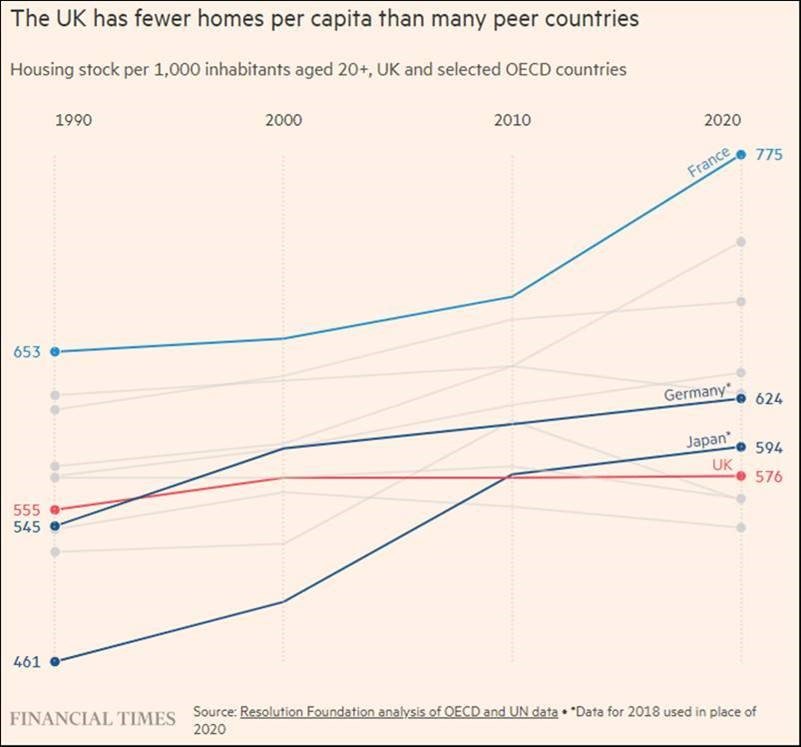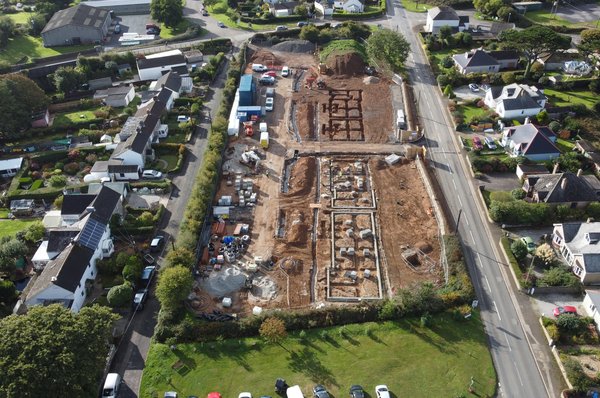It costs the NHS £1.4 billion a year and the wider economy nearly £20 billion a year. The housing crisis is nothing new. People agree it’s happening.
But some of the solutions being put forward just aren’t going to be big enough to make a dent in it says Allister Young, CEO of Coastline Housing, in his latest opinion piece.
I’ve recently heard and read a few things in different places that have made me reflect on the housing crisis. That’s probably not a surprise, you’d expect me to be thinking about the housing crisis.
These days, I think it’s unusual to meet someone who doesn’t agree that there’s a housing crisis. It wasn’t always like that, which is progress, in a way. Because taking action to solve a problem is difficult unless the majority of people agree that something needs to change. But while more and more people are in agreement that there is a housing crisis, I’m not sure all that many people realise how bad the crisis is.
And by ‘bad’ I mean two things: how serious the effects of the crisis are, and also how big the crisis is.
I’ll tackle the seriousness of the effects first. The housing crisis isn’t just about whether someone can afford to buy their first home. Homes in England that don’t meet the Decent Homes Standard impact on people’s health and wellbeing, costing the NHS £1.4 billion a year. And they cost the wider economy nearly £20 billion a year, due to the impact they have on people’s ability to work and contribute to the economy. And that’s just the £s and pence.
Even more seriously, those ‘non-decent’ homes that are too cold and damp cause the death of more than 7,000 people every year. There’s a reason that housing and health used to be part of the same government department, back in the 1940s.

But if we want to solve the housing crisis, it’s not enough just to make sure people understand how serious the effects are. We also have to make sure people understand how BIG the crisis is. Because unless people understand the size of the crisis, they won’t appreciate the steps that need to be taken to solve it. They’ll reach for solutions that are helpful, but just not enough.
So here’s some information on how big the crisis is, compared to some of the things that people often think would solve it. Warning: this might end up feeling a bit daunting. But it’s important that we’re open about the size of the challenge we face. And I’ll come back next time with a ‘part 2’ - reasons why we should be optimistic.
So, here goes, starting with a quote from Olly Monk, Cornwall Council’s cabinet member for housing:
Generations? That’s a long time. Is it really that bad? Well, yes. The chart below shows how many homes the UK has per person compared to some other countries. You’ll notice two things: we don’t have as many homes as other countries, and we’ve not been doing much to close the gap.

Now, I’ve heard people say recently that there would be enough homes for everyone, if only we stopped people coming to the UK on small boats. Reality check: over the four years from 2020 to 2023, an average of 50,000 a year made that crossing (I’m not going to get into the discussion on the rights or wrongs of people that make the crossing here – this is just about the numbers).
But the UK has about more than 1 million homes fewer than it needs to make sure everyone has a decent affordable home to live in, and both main political parties agree that around 300,000 a year need to be built (the Financial Times recently argued that the true figure was nearer 500,000).
OK, but why do we have to build on ‘green fields’, what about building on ‘brown field’ sites in our towns and cities? Good idea. The government thinks there is space for 200,000 homes, the Campaign for the Protection of Rural England says it’s closer to 1.2 million. Even if you take the CPRE’s higher number (remembering you would expect them to argue against building on ‘green field’ sites!), that’s about four years’ housing supply. Then what?
OK then, but aren’t there loads of empty homes? Yes. About 261,000 of them, according to the Big Issue. But before you get too excited about that, the UK actually has far fewer empty homes per person than almost every other country in Europe (1.1% of homes in England, compared to an average of 16% across Europe). And, strange as this might sound, the Big Issue has argued that we need MORE empty homes to solve the housing crisis. The reason is that without a certain number of ‘empty homes’, the market stops functioning properly.
Right then, what about holiday homes and second homes? The government has just announced some changes to make it more difficult to turn a home into a holiday let haven’t they? Yes, and the change will be very welcome. It’s estimated that there are 13,000 second homes and 11,000 holiday lets in Cornwall. But there are currently 26,000 households on the waiting list in Cornwall, to say nothing of the homes that need to be built for future growth and prosperity.
So as you can see, there’s a bit of a disconnect between the size of the problem, and the things that lots of people think will make the problem go away. The issue, I think, is that the numbers involved in the housing crisis are simply too big for people to wrap their heads around. That means we’re tempted to reach for solutions that while helpful, simply aren’t big enough to solve the crisis. Bluntly, there’s no getting away from the fact that we need to build more homes. Lots of them. And a lot of them will be on ‘green fields’ beside where someone else already lives. Sorry NIMBYs.
